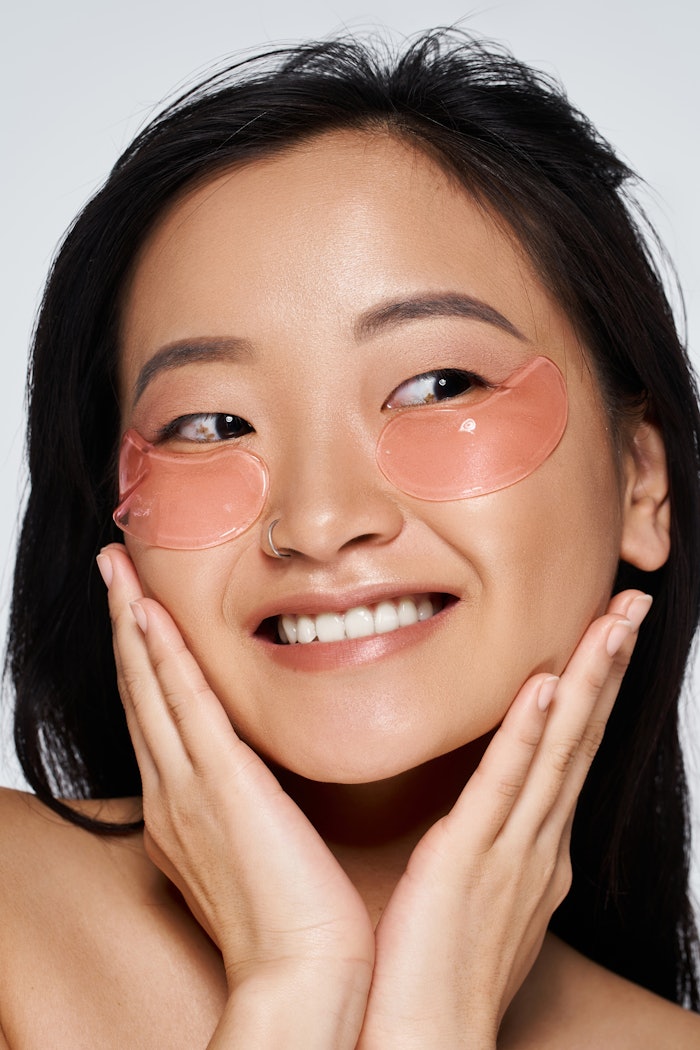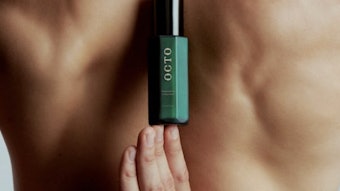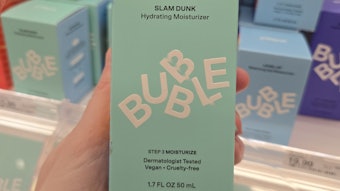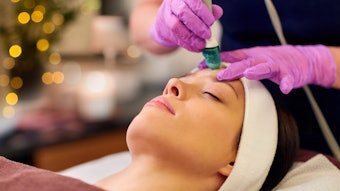
Skin care bridges self-care and science, offering autonomy through rituals like photoprotection and moisturization. This article reviews examples from the literature and emphasizes the opportunity for beauty, so long as it is grounded in solid evidence.
This article is only available to registered users.
Log In to View the Full Article
Skin care bridges self-care and science, offering autonomy through rituals like photoprotection and moisturization. This article reviews examples from the literature and emphasizes the opportunity for beauty, so long as it is grounded in solid evidence.
The skin-brain connection is reshaping how we view skin care — not just as a cosmetic routine, but as a meaningful act of self-care. Daily rituals like applying sunscreen or moisturizers are more than skin deep, they engage neurosensory pathways, reduce stress and promote emotional resilience. Emerging neurocosmetics also leverage sensorial cues including touch, scent and temperature to enhance mood and well-being without medicalizing the experience.
The present article reviews examples from the literature demonstrating these connections to skin care. It also emphasizes that balancing innovation with evidence is critical – and suggests that, by anchoring claims in science and respecting user autonomy, skin care could evolve into a powerful tool for both physical and emotional health.
Skin Care as a Lever for Emotional Self-regulation
Daily care routines, e.g., photoprotection, moisturizing and sensorial textures/scents, have been framed as repeatable, autonomy-enhancing actions that help to lower stress and reduce emotional load. Regular sunscreen use reduces ultraviolet (UV)-triggered cortisol release and “inflammaging” cascades that extend into the brain, while moisturizers lower systemic inflammatory markers. These are practical, low-burden behaviors that give consumers control over stress physiology in day-to-day life.1, 2
Agency via ‘Neuro-active’ and Sensorial Cues
Neurocosmetics are described as ingredients designed to engage neurosensory pathways — endorphin-mimetic peptides, transient receptor potential (TRP) channel sensates and aromatherapeutic oils. This approach positions touch, scent and temperature as tools for mood co-regulation during application. Such tools are placed within ethical, non-prescriptive self-care, steering clear of a psychiatric framing while promoting an experiential sense of calm and comfort alongside visible skin benefits.1
The effects can be expanded further by documenting clinical evidence for neuro-active topicals such as acetyl hexapeptide-8 and cannabidiol, which have shown quantifiable improvements in skin texture/color. By addressing appearance, these outcomes also indirectly support emotional confidence.4
Cognitive Resilience Through Routine Skin Health
The review “Healthy Skin, Healthy Brain” links everyday practices like caring for a healthy skin barrier and UV management to brain outcomes, including hippocampal neurogenesis, reduced neuroinflammation and modulation of brain-derived neurotrophic factor (BDNF) levels. It also explores dietary and topical strategies — such as tomato and lemon extracts — that raise peripheral and central BDNF in models. This positions routine skin health as a purposeful, accessible act: “care for skin to care for mind.”2
Rajagopal, et al., reinforce this with a mechanistic survey of neuromediators and neuropeptides (e.g., acetylcholine, serotonin, substance P and CGRP) that influence both skin and central nervous system homeostasis, suggesting that skin care can have plausible upstream effects on cognitive resilience.4
Personalization that Respects Autonomy
The industry’s neurocosmetics vision is for AI-guided, emotion-responsive regimens informed by wearables, micro-expression analysis in the mirror, and non-invasive skin feedback (e.g., conductance to assess hydration levels in real time). Personalization should augment rather than override user choice, which requires informed, data-literate participation rather than passive algorithmic compliance.1
Rajagopal, et al., also predict AI-integrated “smart neurocosmetics” and epigenetic modulation are the next innovation wave but raise caution for regulatory oversight and ethical safeguards.4
In this setting, daily skin care can be considered a self-efficacy practice capable of modulating stress biology and potentially cognitive health – if the risk of placebo effects, biomarker validation and ethical aspects are taken into consideration.1, 2, 4
Critique by Dermatologists: Cosmetics are Cosmetics
It is worth noting that prominent dermatologists taking a more conservative stance reiterate that cosmetics are cosmetics, and only their effects in skin should be claimed; pleasant textures and scents do not, in themselves, make a product a neurocosmetic. In addition, “nothing new is being offered” if claims leap beyond epidermal mechanisms or apply mood-modulation language without robust evidence. As such, conflating sensorial appeal with bona fide neuromodulation calls for regulatory lines to prevent false claims.3
There is agreement that the skin–brain axis exists and that sensorial qualities from products meaningfully shape consumer experience. The critique is not against sensory effects; rather, it is against exaggerated claims.1-4
Indeed, potential outcomes of neurocosmetics for emotional wellness and cognitive repair have, in some cases, been cautiously extended; explicitly with calls for biomarkers or randomized controlled trials. This holds to dermatologists’ critique that in the absence of rigorous human evidence, such brain or mood claims exceed what a cosmetic can responsibly promise.1-4
Implications for Brands
Aligning these concepts can empower users to act through UV protection, skin barrier care and sensorial ritual. These behaviors can plausibly downshift stress biology and align with well-being goals.1, 2, 4 In addition, addition, users’ agencies must be protected against inflated claims by keeping emotional benefits in the realm of subjective comfort unless hard endpoints (biomarkers, validated psychometrics, etc.) are met.3
More specifically, when discussing neurocosmetics, it is key to adopt critics’ concerns and underpin claims by epidermal and neurosensory mechanisms – with a clear separation of comfort or soothing effects from treating psychological disorders. If brands consider exploring brain-linked outcomes such as cortisol modulation, heart rate variability or BDNF changes, they should state the current evidence carefully and the need for clinical trials before making definitive claims.1-4
By uniting the opportunities emerging from skin–brain science with the described safeguarding principles, skin care can be positioned as both a meaningful act of self-care and a practice that honors clear regulatory boundaries.
Participating in the Dialogue
The cosmetics industry deserves a place in this dialogue. Skin care products are used by consumers daily, and the role of touch, long recognized for its influence on the brain, can be thoughtfully harnessed as part of cosmetic application.
For most people, access to a psychodermatologist will remain out of reach, highlighting the need to open this space to the industry, which invests in clinical research often matching the rigor of dermatological trials. Dermatologist endorsement holds strong consumer appeal but it should not be the sole voice guiding this conversation.
The cosmetics industry has a great deal to offer in this space. Consumer research underscores that ritualized behaviors such as grooming routines are central to consumer engagement, where cues like “minty freshness” signal and reinforce desired outcomes (e.g., cleanliness) that are both learned and meaningful in daily grooming practices.5 In evolutionary terms, grooming also appears to be innate, as apes routinely engage in social grooming as a powerful bonding ritual, rooted in biology and emotional regulation.6
Together, these perspectives suggest that skin care rituals are not simply cultural habits but blend learned sensory cues with an evolutionary heritage. But to connect these dots in a meaningful way, we as an industry must call for a balanced, evidence-led approach drawing on both clinical psychodermatology and cosmetic expertise to empower skin health and well-being for consumers.
References
- Haykal, D., Berardesca, E., Kabashima, K. and Dréno, B. (2025). Beyond beauty: Neurocosmetics, the skin-brain axis, and the future of emotionally intelligent skincare. Clin Dermatol, 43(4) 523-527; doi:10.1016/j.clindermatol.2025.05.002.
- Yoon, K.N. and Chung, J.H. (2025). Healthy skin, healthy brain. J Dermatol Sci; doi:10.1016/j.jdermsci.2025.06.001.
- Misery, L., Maibach, H.I., Koo, J. and Jafferany, M. (2025, Jul 15). Neurocosmetics are cosmetics, which mean that they could have effects only on skin. Clin Dermatol; doi:10.1016/j.clindermatol.2025.07.002.
- Rajagopal, R., Singh, S., Sharma, P., et al. (2025). Neurocosmetics: An extensive overview of topical neuromodulators, delivery technologies, and future directions. Arch Dermatol Res, 317(1) 15-37; doi:10.1007/s00403-024-03019-1.
- WARC Advisory and MSQ (2024). Harnessing the power of rituals: Where marketing meets meaning. WARC white paper. Available at https://www.warc.com/content/paywall/article/warc-exclusive/harnessing-the-power-of-rituals-where-marketing-meets-meaning/en-gb/157241
- Max-Planck-Gesellschaft. (2012, Aug 28). Chimpanzees create ‘social traditions’: Unique handclasp grooming behavior reveals local difference. ScienceDaily. Available at https://www.sciencedaily.com/releases/2012/08/120828190858.htm










